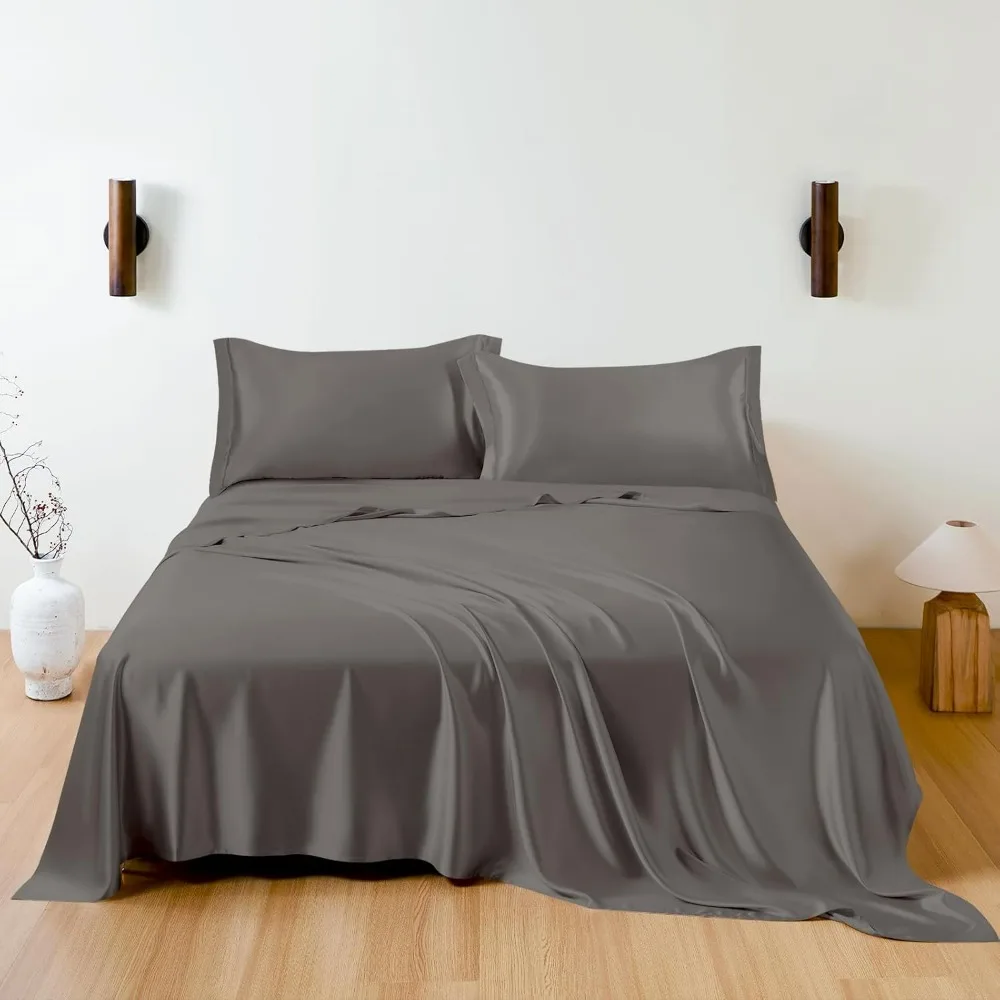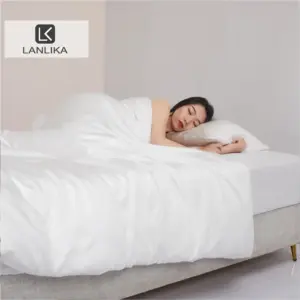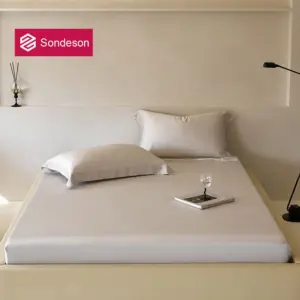Are you tired of waking up in the middle of the night, either sweating or shivering? You’re not alone. Many people struggle with maintaining comfortable sleep temperature throughout the year. The solution might be simpler than you think: silk sheets.
The remarkable temperature regulation properties of silk sheets make them a game-changer for quality sleep. Unlike ordinary bedding, silk naturally adapts to your body’s needs, keeping you cool when it’s hot and warm when it’s cold. This unique balance comes from silk’s incredible natural structure that has evolved over thousands of years to provide protection and comfort.
What makes silk so special? It’s all about the unique combination of breathability, moisture management, and natural insulation working together. The thermal properties of silk bedding aren’t just luxury marketing—they’re backed by the material’s molecular structure and natural performance. Let’s dive into how silk can transform your sleep experience year-round.
The Science Behind Silk’s Temperature Regulation Properties
The magic of silk’s temperature control isn’t really magic at all—it’s science. Silk owes its remarkable properties to its unique protein structure composed of fibroin and sericin. These natural protein fibers evolved to protect silkworms by creating a stable environment regardless of outside conditions.
The science behind how silk sheets regulate temperature comes down to three key mechanisms:
- Natural breathability that allows constant airflow
- Exceptional moisture-wicking that manages humidity
- Natural thermal insulation that retains warmth when needed
These properties work together to create a sleep surface that dynamically responds to your body’s needs throughout the night. Unlike synthetic materials designed to do just one thing (like cooling), silk balances multiple properties simultaneously.
Natural Breathability: How Silk Allows Airflow
Breathability is crucial for comfortable sleep, and silk excels in this area. The natural protein fibers in silk create a structure with microscopic air channels that allow continuous airflow. These tiny pathways let hot air escape away from your body instead of trapping it against your skin.
Think of silk’s breathability like your skin’s pores—constantly allowing air exchange to maintain balance. In fact, silk allows approximately 55% more airflow than comparable cotton sheets, creating a sleep surface that never feels stuffy or suffocating. This continuous air circulation is the first key to silk’s temperature regulation.
Exceptional Moisture-Wicking: Managing Night Sweats and Humidity
One of silk’s most impressive qualities is its ability to manage moisture. Silk fibers are hygroscopic, meaning they can absorb up to 30% of their weight in moisture without feeling wet or damp to the touch. This is significantly better than most bedding materials.
The way silk prevents night sweats is fascinating: it quickly draws moisture away from your skin and disperses it across the fabric’s surface for evaporation. Unlike cotton, which holds moisture against your skin, silk actively moves it away. This process:
- Prevents the clammy feeling that disrupts sleep
- Reduces humidity buildup under the covers
- Helps maintain consistent body temperature
- Creates a dry, comfortable sleep surface all night long
Natural Thermal Insulation: Warmth Without Weight
The third component of silk’s temperature magic is its natural insulation. Silk fibers create tiny air pockets that trap warm air when needed, similar to how high-performance thermal layers work in outdoor gear. These pockets provide insulation without adding bulk or weight.
What makes this truly special is that silk provides warmth when you need it without overheating. The insulation works in harmony with breathability, creating a balanced sleep environment. This is why silk sheets have been prized in cold climates for centuries, despite their lightweight feel. You get cozy warmth without the heavy, smothering sensation of flannel or thick cotton.
Silk’s Temperature Benefits for Different Sleep Needs
The beauty of silk’s adaptive properties is how well they serve different types of sleepers. Since silk bedding regulates temperature for both hot and cold sleepers, it’s one of the few materials that can truly accommodate various preferences and needs. Sleep studies consistently show that maintaining optimal temperature (typically between 60-67°F) significantly improves sleep quality.
Benefits for Hot Sleepers: Cooling Properties
Hot sleepers face unique challenges—overheating, night sweats, and the constant search for the “cool side” of the pillow. Silk directly addresses these problems through:
- Enhanced breathability that prevents heat buildup
- Superior moisture-wicking that keeps skin dry
- A naturally cool-to-the-touch surface
- Reduced friction that minimizes body heat generation
Our cooling silk sheets typically stay 3-5°F cooler than cotton alternatives in warm conditions. This temperature difference might seem small, but it can be the crucial margin between restful sleep and tossing all night. Hot sleepers particularly appreciate silk’s ability to quickly disperse heat rather than trapping it against the body.
Benefits for Cold Sleepers: Insulating Warmth
For those who always feel cold at night, silk offers equally impressive benefits:
- Natural insulation that traps body heat in air pockets
- Temperature-stabilizing properties that maintain warmth
- Lightweight comfort without the heaviness of thermal materials
- Quick warming response when you first get into bed
Silk provides comparable warmth to flannel sheets at about half the weight. This means cold sleepers can enjoy cozy comfort without feeling buried under heavy bedding. The insulation is also consistent throughout the night, helping maintain stable body temperature rather than the gradual cooling that happens with many other materials.
Benefits for Couples with Different Temperature Preferences
Perhaps the most challenging sleep scenario is when partners have different temperature preferences. One person is throwing off blankets while the other is pulling them back on. Silk’s unique properties make it ideal for couples because:
- It adapts to individual body temperatures within inches of the same sheet
- Creates “personal microclimates” on each side of the bed
- Balances both warming and cooling needs simultaneously
- Reduces temperature-based sleep disturbances
The year-round benefits of silk sheets are particularly valuable for couples since the material can adapt to different body temperatures and preferences. One partner can feel comfortably cool while the other stays cozy and warm—all under the same bedding.
Comparing Silk to Other Bedding Materials: Temperature Performance Analysis
Understanding how silk compares to other popular bedding materials helps clarify its unique advantages. While all materials have their merits, silk offers a balanced performance profile that excels specifically in temperature regulation.
Silk vs. Cotton: Temperature Regulation Comparison
Cotton has long been the standard for bedding, but how does it compare to silk for temperature control?
- Breathability: Both are breathable, but silk’s structure allows for more efficient air circulation
- Moisture Management: Cotton absorbs up to 27% of its weight (vs. silk’s 30%) but dries much more slowly
- Heat Retention: Cotton holds heat when damp, while silk continues to breathe
- Temperature Adaptation: Cotton has a narrower comfort range than silk’s adaptive properties
The advantages silk has over cotton become most apparent during temperature fluctuations or for people who experience night sweats. While cotton starts comfortable, it can quickly become problematic when moisture enters the equation. Silk maintains its performance regardless of humidity levels.
Silk vs. Synthetic Fabrics: Which Offers Better Climate Control?
Synthetic fabrics like polyester and microfiber have improved over the years, but they still fall short in temperature regulation:
- Heat Retention: Polyester retains approximately 40% more heat than silk
- Skin Temperature: Synthetic sheets typically increase skin temperature by 2-3°F more than silk
- Breathability: Most synthetics have limited air permeability compared to silk
- Moisture Handling: Synthetics often repel rather than absorb moisture, creating humidity issues
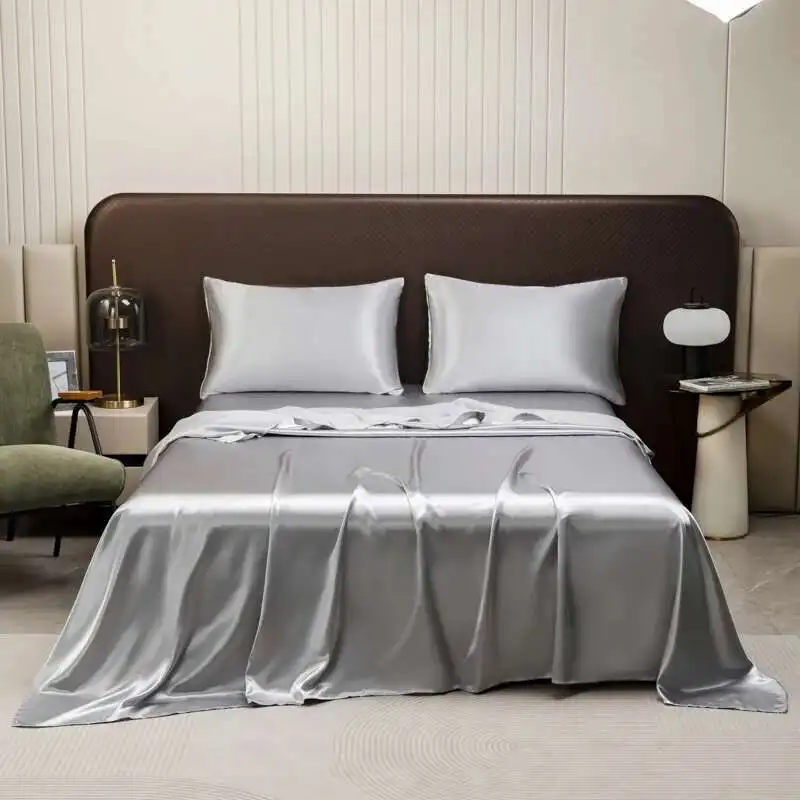
The fundamental difference is that synthetic materials attempt to mimic natural properties through engineering, while silk inherently possesses these qualities. The result is that synthetics often excel at either cooling or warming, but rarely both—unlike silk’s balanced performance.
Silk vs. Linen and Other Natural Fibers
Other natural fibers offer compelling alternatives with their own unique properties:
- Linen:
- Excellent summer breathability but poor insulation
- Great moisture absorption but can feel damp
Durably cooling but less versatile year-round
Bamboo:
- Good moisture-wicking but less insulating than silk
- Soft texture but typically treated with chemicals
- Eco-friendly growth but processing can be resource-intensive
While these materials excel in specific conditions, silk offers the most balanced year-round performance. Its ability to both cool and warm as needed gives it versatility that other natural fibers don’t quite match.
Maximizing Silk’s Temperature Control Benefits: Practical Tips
To get the most from your investment in silk bedding, consider these practical tips:
- Choose the right momme weight for your needs (19-22 for maximum breathability, 22-25 for balanced performance)
- Layer appropriately by season (silk flat sheet alone in summer, add a light duvet in spring/fall)
- Wash properly using mild detergent and cool water to maintain the protein structure
- Allow air circulation around your bed (avoid pushing it directly against walls)
- Pair with breathable mattress protectors that won’t counteract silk’s benefits
Our mulberry silk sheets are specifically designed to maintain their temperature-regulating properties through proper care. Following these guidelines ensures your silk bedding will continue performing optimally for years to come.
100% Silk Sheets, Green Silk Sheets, King Size Silk Bedding Set, Mulberry Silk Bedding Sets, Queen Size Silk Bedding Set
Price range: $1,246.21 through $1,615.22 Select options This product has multiple variants. The options may be chosen on the product pageBamboo Silk Sheets, Cooling Silk Sheets
Price range: $130.76 through $177.80 Select options This product has multiple variants. The options may be chosen on the product page100% Silk Sheets, King Size Silk Bedding Set, Mulberry Silk Bedding Sets, Queen Size Silk Bedding Set, White Silk Sheets
Price range: $1,000.79 through $1,351.42 Select options This product has multiple variants. The options may be chosen on the product pageMulberry Silk Fitted Sheet, Mulberry Silk Sheets
Price range: $486.21 through $944.97 Select options This product has multiple variants. The options may be chosen on the product page100% Silk Sheets, Queen Size Silk Fitted Sheet, Queen Size Silk Pillowcases, Queen Size Silk Sheets
Price range: $259.05 through $284.13 Select options This product has multiple variants. The options may be chosen on the product page100% Silk Sheets, King Size Silk Fitted Sheet, Pink Silk Sheets, Queen Size Silk Fitted Sheet
Price range: $692.72 through $888.76 Select options This product has multiple variants. The options may be chosen on the product page
Beyond Temperature: Additional Benefits of Silk Sheets
While temperature regulation might be your primary reason for considering silk, the material offers numerous additional benefits that enhance your sleep experience:
Hypoallergenic Properties: The hypoallergenic features of silk sheets come from natural resistance to dust mites, mold, and mildew—perfect for allergy sufferers
Skin and Hair Benefits: Silk contains 18 amino acids that nourish skin during sleep and reduces friction that causes hair breakage and “bed head”
Durability and Longevity: Properly cared for silk sheets can last 3-5 years, making them a smart long-term investment
Naturally Chemical-Free: Unlike many treated cotton or synthetic options, quality silk doesn’t require chemical treatments to achieve its benefits
These complementary advantages work alongside temperature regulation to create a comprehensive sleep solution rather than addressing just one aspect of comfort.
Choosing the Right Silk Sheets for Optimal Temperature Control
Not all silk sheets are created equal when it comes to temperature regulation. To make the best choice for your needs, consider these key factors:
Momme Weight: This measures silk density—19-25 momme provides the optimal balance between durability and temperature control
Silk Quality: Mulberry silk offers superior temperature regulation compared to other varieties
Weave Type: Charmeuse weave balances breathability with insulation, while habotai maximizes cooling
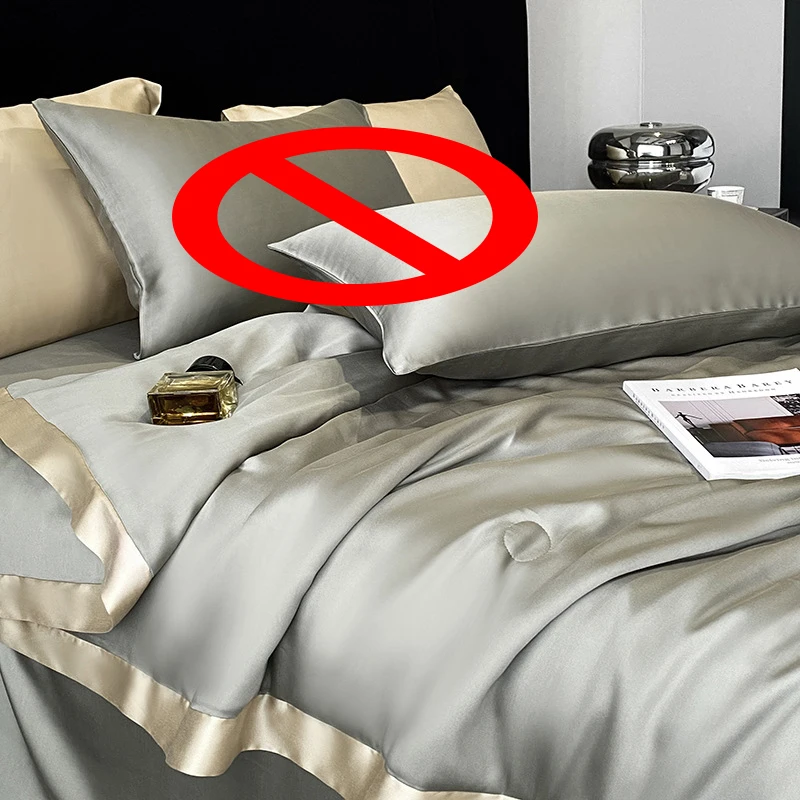
For the most consistent temperature regulation, look for 100% silk sheets rather than blends or lower-quality alternatives. Pure silk delivers the full range of natural benefits without compromise. When selecting for specific needs:
- Hot sleepers may prefer 19-22 momme for maximum breathability
- Cold sleepers often benefit from 22-25 momme for better insulation
- Those in variable climates do well with 22 momme for balanced performance
Frequently Asked Questions About Silk Sheets and Temperature Regulation
Do silk sheets really keep you cool?
Yes, silk naturally regulates temperature through its breathable structure and moisture-wicking properties. It stays approximately 3-5°F cooler than cotton in warm conditions by efficiently dissipating heat and humidity away from your body.
Are silk sheets good for winter use?
Absolutely. Despite their lightweight feel, silk sheets provide excellent insulation by trapping warm air in microscopic pockets within the fiber structure. They offer comparable warmth to much heavier materials while maintaining breathability.
How does silk compare to cooling gel-infused sheets?
While cooling technologies offer initial coolness, they often can’t adjust as your body’s needs change throughout the night. Silk provides adaptive cooling rather than forced cooling, creating a more balanced sleep environment that responds to your body.
Can silk sheets help with night sweats?
Yes. Silk absorbs up to 30% of its weight in moisture while wicking it away from your skin. This keeps you dry throughout the night even if you experience night sweats, preventing the clammy feeling that disrupts sleep.
Are Silk Sheets Worth the Investment for Temperature Control?
When considering the investment in luxury silk bedding sets, the temperature regulation benefits alone often justify the price for many sleepers. Quality silk sheets typically last 3-5 years with proper care, compared to 1-2 years for standard cotton sheets. This longevity helps offset the higher initial cost.
Beyond simple economics, consider the value of improved sleep quality. Temperature disruption is one of the leading causes of sleep disturbances, and addressing this issue can have profound effects on overall health and wellbeing. Many users report that the investment pays dividends in better rest and increased daytime energy.
There’s also potential savings in reduced heating and cooling costs, as silk helps maintain comfortable sleeping temperature with less environmental control needed. This benefit is particularly noticeable during seasonal transitions when household temperature management is most challenging.
How Does Silk Compare to Temperature-Regulating Technology Fabrics?
Modern bedding technology has produced various “cooling” and “temperature-regulating” fabrics that make bold claims. How do these compare to silk’s natural properties?
Technological fabrics typically work through:
* Phase-change materials that absorb or release heat at specific temperatures
* Special weaves designed to maximize airflow
* Moisture-wicking treatments applied to conventional fabrics
* Cooling gel infusions that provide temporary cooling sensations
While these innovations can be effective, they often excel at either cooling or warming—rarely both. They may also diminish in effectiveness over time as treatments wear off or materials break down. Silk, by contrast, maintains its natural temperature-regulating properties throughout its lifespan.
The key difference is that silk’s temperature regulation evolved naturally over thousands of years rather than being engineered in a lab. This gives it an integrated, responsive performance that technological alternatives still struggle to replicate fully.

